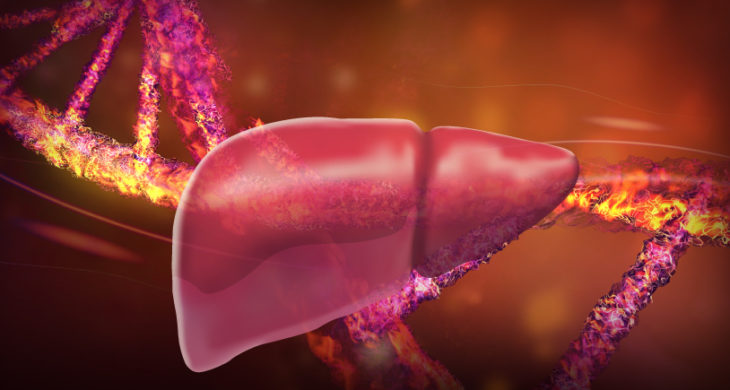
Date: 21st March 2022
With over 300 million people worldwide suffering with a genetic disorder and 95% lacking an FDA-approved treatment the search for new therapies is driving researchers to find new tools. Prime editing (PE), also dubbed as the ‘search-and-replace’ genome editing tool, is a precise technique that can generate any moderately sized genetic variation without the need for double-strand DNA breaks. This feature together with the ability of PEs to directly write new genetic information makes them extremely versatile and accurate, more so that other CRISPR-based strategies. However, in vivo application for the treatment of genetic diseases remains challenging. Now, researchers have developed a size-reduced prime editor for adeno-associated virus (AAV) delivery into the liver, which repaired disease-causing mutation in vivo in a mouse model of phenylketonuria (PKU).
PKU is a rare genetic condition that causes increased levels of phenylalanine in the body. In most cases, PKU is caused by mutations in the phenylalanine hydroxylase (PAH) gene, making it an ideal candidate for gene editing therapies. PE is a more recent evolution of the CRISPR-Cas technology, the PE protein consists of a catalytically impaired Cas9 (nickase) tethered to an engineered reverse transcriptase (RT). This fusion protein forms a complex with a prime editing guide RNA (pegRNA) which contains both a DNA-targeting and template repair domain. The technique allows repair of patient mutations, generation of disease models, and in vivo editing. However, there are still challenges to its use in vivo, such as efficient delivery systems and the lack of optimal design tools.
Now, researchers at the University of Zurich, Switzerland, led by Gerald Schwank, have developed an in vivo prime editing approach for the liver, enabling the correction of a PKU mouse model with therapeutic reduction of blood phenylalanine (L-Phe).
The large size of the PE machinery poses a challenge for in vivo delivery therefore the team wanted to remove part of it to reduce its size. They opted to delete the RNaseH domain of the RT, which from previous work could be speculated as insignificant in the context of PE. They used the prime editor 2 (PE2) which contained mutations to enhance the activity of the RT, and created a version that lacked the RNaseH domain, PE2ΔRnH. Initial tests in fluorescent reporter cell lines showed comparable editing efficiencies between PE2ΔRnH and the original PE2. This was corroborated further by targeting seven pathogenic mutations at different loci, where they saw no difference in editing rates or indel formation rates between the two variants.
To achieve in vivo delivery the team chose to use AAVs, which have been used for other CRISPR-based editors. To stay within the limited AAV packaging capacity it is common place to split the coding sequence onto two separate AAVs using the intein-mediated protein trans-splicing system from cyanobacterium Nostoc punctiforme. The team created a series of PE2 variants, split at different sites. The most efficient intein-split variant, maintaining 75% of the activity of unsplit PE2.
With the optimal design settled the team wanted to test the system in vivo. First they targeted the Dnmt1 gene, and generated AAV constructs in which the intein-split PE2ΔRnH and the pegRNA were expressed under the liver-specific promoters. They used AAV serotype 8 (AAV8) which shows a significantly greater liver transduction efficiency than those of other serotypes. The constructs were delivered to mice pups on postnatal day 1, and they found editing efficiencies reached ~15% at the Dnmt1 locus at 4 weeks, and this rate was maintained at 12 weeks.
To increase the editing efficiency the team then switched to human adenovirus 5 (AdV) vector for PE delivery. This has the advantage of a higher packaging capacity meaning that unsplit PE2 can be loaded however, it is far more immunogenic raising safety concerns for its application in patients. This increased the in vivo editing rates of unsplit PE2ΔRnH to 58% on the Dnmt1 locus.
To provide proof of concept of PE correcting a genetic liver disease, the team selected to use the AdV approach for repairing the disease-causing Pahenu2 mutation in a mouse model of PKU. For a number of genetic liver diseases, including PKU, correction rates ~10% could still lead to therapeutic benefit. Upon systemic delivery into mice, the team observed ~2% correction rate in adults and ~8% in newborns. Whilst this showed editing was occurring, the rate was relatively low and needed to be improved upon.
A second single guide RNA (sgRNA) can be designed to nick the nonedited DNA strand, and has previously been shown to further augment DNA repair of the edited DNA strand. Using this strategy the team managed to boost the correction efficiencies in neonates up to 17%, with an average of 11%. This led to a therapeutic reduction of blood phenylalanine, without inducing detectable off-target mutations or prolonged liver inflammation.
Interestingly, Cas9-specific antibodies in adult mice treated with AAV8 or AdV were found, but neonates exhibited no humoral immune response, in line with the idea that they have undeveloped immune systems at this age. An innate immune response was seen transiently, but returned to normal levels by day 10.
Conclusions and future applications
The team here have demonstrated the installation of transition and transversion edits in vivo in the liver of mice via PE. They achieve therapeutic reduction of blood phenylalanine in PKU model mice, without inducing off-target mutations.
Whilst, the editing rates achieved here are substantially higher than in previously reported in vivo prime editing studies the approach does have its limitations in terms of clinical translation. The doses of vector required for this level of editing exceeds acceptable vector doses for human trials, and elicited a potent innate immune response. Safety concerns also surround prolonged PE expression and the formation of an adaptive immunity. Lastly, there was a large variation in in vivo PE rates at the two loci, this was not observed in vitro, meaning a better understanding and prediction of efficiencies across multiple genomic loci is required.
The team recognise that additional work is therefore needed to translate in vivo prime editing to the clinic. Enhancing PE activity is needed to reduce required vector doses and developing transient delivery approaches, such as lipid nanoparticle–mediated RNA delivery. One such approach has already been investigated by the godfather of base editing David Liu. He used engineered DNA-free virus-like particles (eVLPs), systematically engineered at different parts of their architecture, and found variants that were able to overcome delivery efficiency. The resulting eVLP was the first virus-like particles to deliver therapeutic levels of gene editing proteins to a variety of tissues in adult animals. It could package 16 times more cargo proteins than previous designs, and enabled an 8- to 26-fold increase in editing efficiency. It would be interesting to load prime editors into the same eVLP and assess their efficacy. Other recent work to enrich PE saw the development of fluoPEER, a fluorescent prime editing and enrichment reporter, a quick and easy system used to screen optimal PE conditions, such as PE variants and pegRNAs. This could be a valuable tool in the search for increased PE activity variations. Whilst, the proof-of-concept here for correcting genetic liver diseases holds much promise, its further development will be crucial if it is to lead to curative therapies.
Böck, D., Rothgangl, T., Villiger, L., Schmidheini, L., Matsushita, M., Mathis, N., Ioannidi, E., Rimann, N., Grisch-Chan, H.M., Kreutzer, S., et al. (2022). In vivo prime editing of a metabolic liver disease in mice. Science Translational Medicine 14, eabl9238.
https://doi.org/10.1126/scitranslmed.abl9238
http://eha.3a7.mywebsitetransfer.com/pioneering-precise-genome-editing-method-genetic-diseases/
http://eha.3a7.mywebsitetransfer.com/peer-enrichment-prime-editing/
